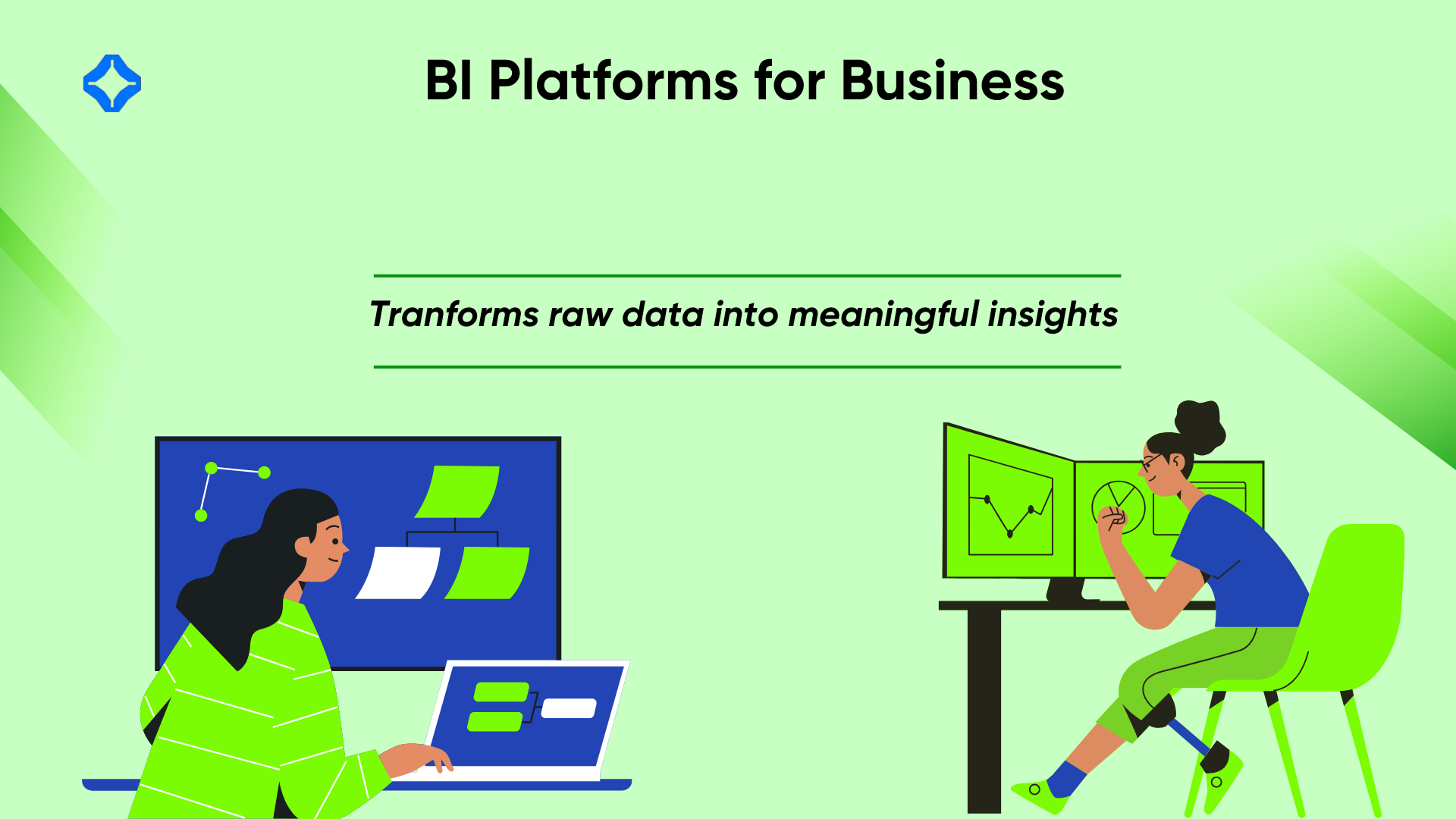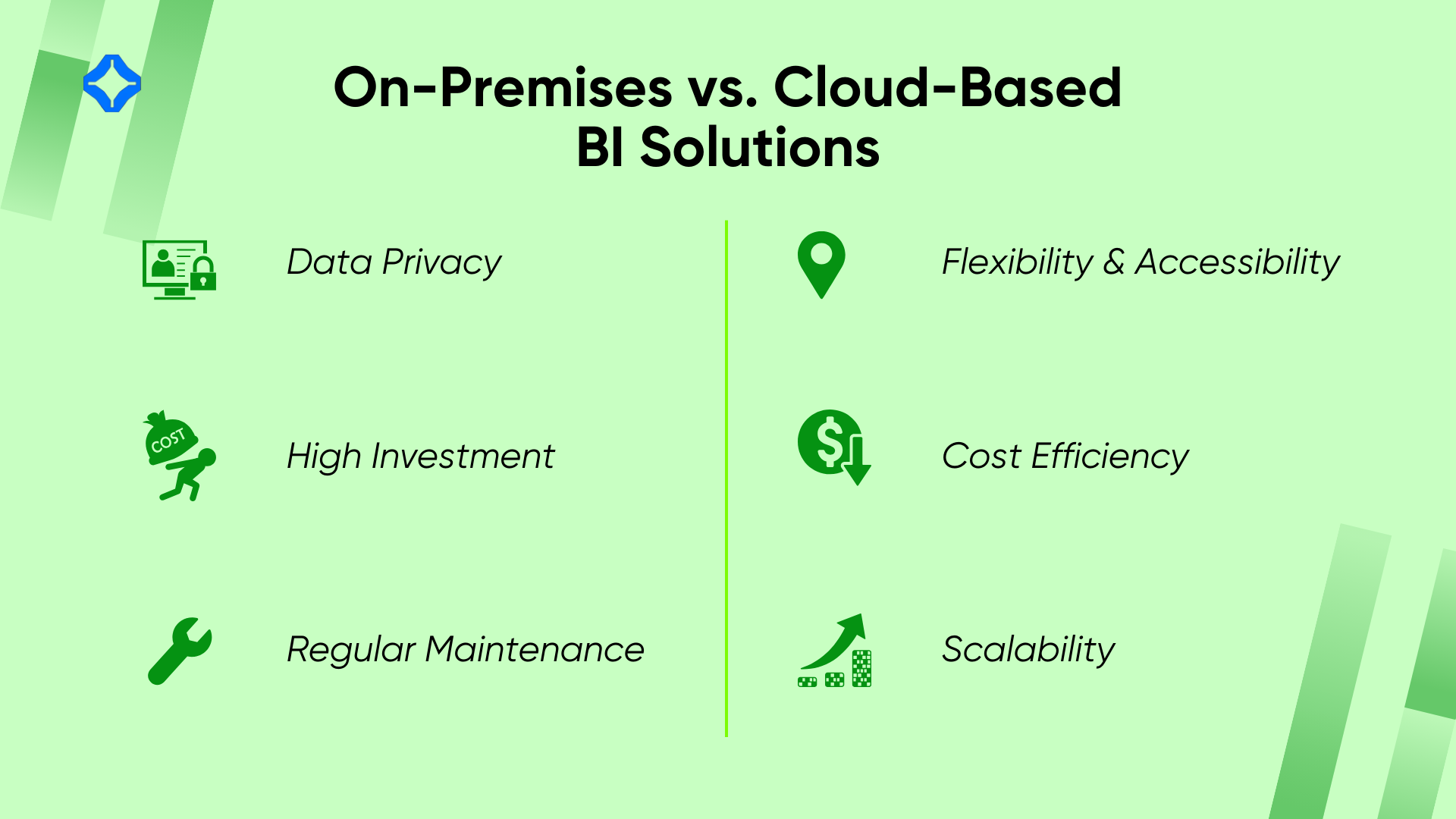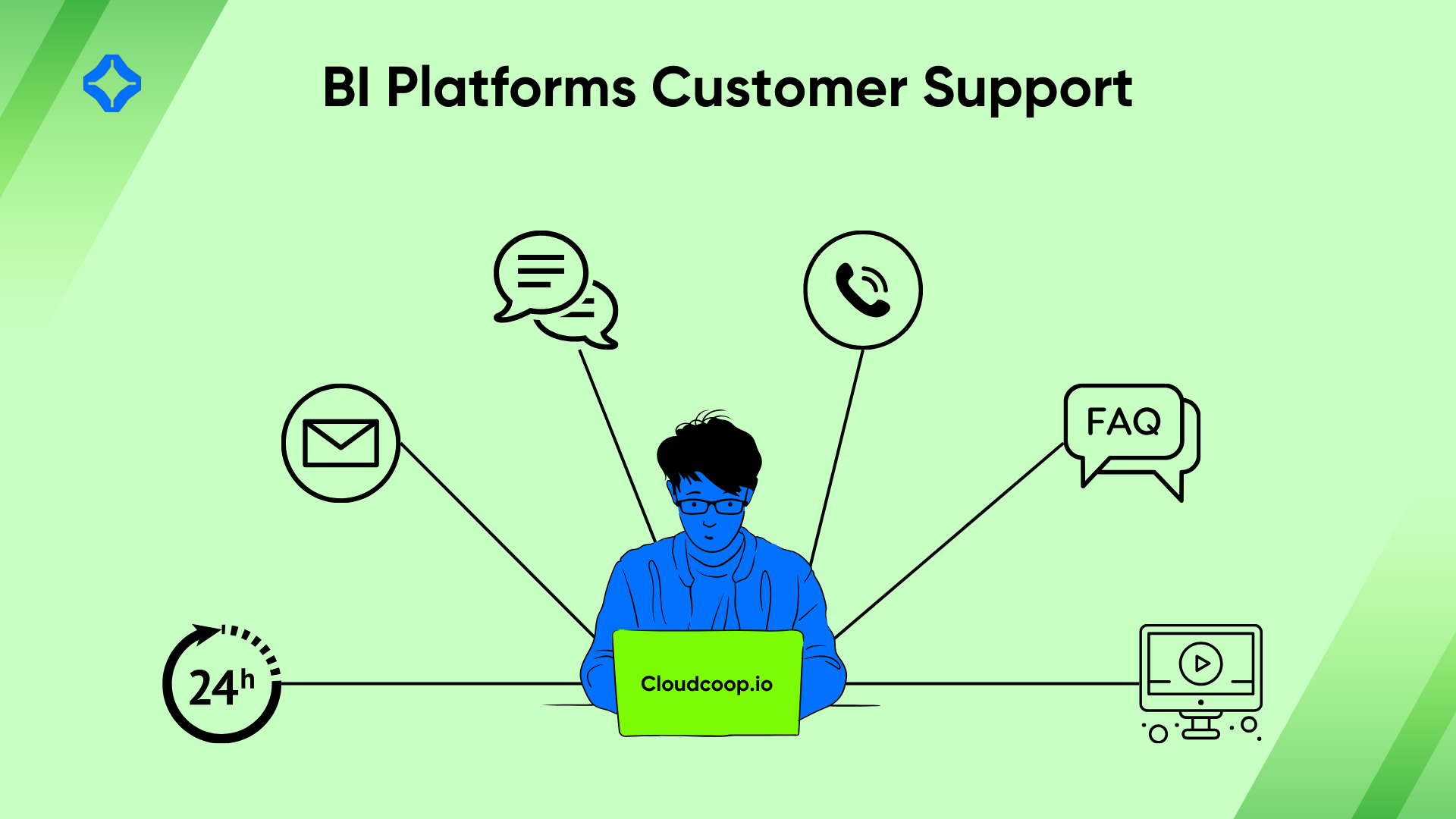Business Intelligence (BI) platforms are essential for organizations that rely on data to guide their decisions. With the vast number of options available, selecting the right BI platform can be overwhelming.
Choosing a BI platform that aligns with your business needs ensures that you extract valuable insights and maximize the benefits of your investment. This article explores the importance of BI platforms, their key features, and the steps to select and implement the best one for your organization.
What is a Business Intelligence (BI) Platform?
A BI platform is a software solution designed to gather, process, and analyze business data, converting it into actionable insights. It allows businesses to visualize their data through dashboards, charts, and reports, making complex information easier to understand.
These platforms collect data from multiple sources, providing a comprehensive view of performance and helping businesses make timely, well-informed decisions.BI platforms are widely used in industries such as retail, healthcare, finance, and logistics to uncover trends, optimize operations, and improve decision-making.
Importance of BI in Modern Business Decision-Making

Data is one of the most valuable assets for businesses today. BI platforms allow organizations to transform raw data into meaningful insights, supporting better decision-making.
For example, businesses can track customer behaviors, forecast trends, and identify inefficiencies within operations. BI platforms help companies stay competitive by enabling data-driven strategies, improving operational efficiency, and reducing risks.
With accurate and timely insights, businesses can adapt to frequent market changes, improve customer satisfactions, and achieve their goals more confidently.
Assessing Your Business Needs and Goals
Before selecting a BI platform, you must evaluate your organization’s specific requirements. Define the problems you want to address, such as improving sales forecasting, optimizing inventory management, or analyzing customer behavior.
Consider the volume and type of data your business generates and ensure that the BI platform can handle it effectively. Matching the platform’s features to your business goals maximizes return on investment and ensures long-term success.
Key Features to Look for in a BI Platform
Data Visualization
Interactive dashboards, graphs, and charts in a BI platform simplify complex datasets. These visuals help make quick decisions by grasping trends and patterns, enabling timely and informed actions.
Real-Time Analytics
Analyzing data in real-time enables businesses to respond quickly to changing conditions. Real-time analytics is particularly valuable in industries where rapid decision-making is necessary, such as finance or retail.
Data Integration
BI platforms must seamlessly connect with existing tools like CRMs, ERPs, and other business systems. This integration ensures all data is centralized, removing barriers and providing a unified view of operations.
Custom Reporting
A reliable BI platform provides customizable reporting options for specific business needs. Customized reports ensure stakeholders receive relevant insights, whether tracking revenue trends or operational performance.
Advanced Security Features
Strong security is essential for BI platforms handling sensitive data. Features like data encryption,role-based access control, and compliance with standards like GDPR or HIPAA are necessary to protect information and maintain trust.
Scalability
The platform must scale alongside your business, handling larger data volumes and supporting more users. Scalability ensures long-term usability without the need for frequent upgrades or replacements.
Mobile Access
A BI platform offering mobile-friendly features ensures stakeholders can access dashboards and reports on the go. This flexibility supports remote decision-making and improves overall productivity.
AI-Powered Insights
Modern BI tools incorporate AI to deliver predictive analytics and automated recommendations. These features improve strategic planning by identifying trends and recommending actions using historical data.
Data Governance Tools
Data governance features are essential for maintaining data quality, including tracking data history and ensuring accuracy. They help organizations trust the insights generated by their BI platform.
Collaboration Capabilities
A BI platform with built-in collaboration features allows teams to share insights, comment on reports, and work together more effectively. This cultivates teamwork and improves the decision-making process.
Comparing On-Premises vs. Cloud-Based BI Solutions

On-Premises BI
- Complete Control Over Data: On-premises BI platforms give businesses full control over their data and infrastructure, ensuring high levels of customization and security.
- Enhanced Data Privacy: These solutions are ideal for organizations handling sensitive data, such as healthcare or finance, where strict compliance and security are necessary.
- High Initial Investment: On-premises systems require substantial upfront costs for hardware, software, and implementation.
- Ongoing Maintenance: Regular updates, IT support, and hardware upgrades increase the total cost, making it less feasible for small businesses.
- Limited Scalability: Scaling on-premises BI can be challenging due to hardware limitations, requiring additional infrastructure investments.
Cloud-Based BI
- Flexibility and Accessibility: Cloud BI solutions allow users to access reports and data from any location with an internet connection, supporting remote and distributed teams.
- Cost Efficiency: These platforms have lower initial costs since they do not require on-site infrastructure. Subscription-based pricing models make them affordable for businesses of all sizes.
- Seamless Updates: Cloud providers handle software updates and maintenance automatically, assuring systems stay current without additional effort from the user.
- Scalability: Cloud BI platforms quickly scale with growing business needs, handling increased data volumes and user demands without much investment.
- Built-In Security: Reputable cloud providers offer advanced security features, such as encryption, multi-factor authentication, and compliance certifications, to safeguard data.
Evaluating Scalability and Integration Capabilities
Future-Ready Scalability
Choose a BI platform that can seamlessly adapt to growing business demands, including handling larger datasets and supporting more users without performance issues. This flexibility ensures the system remains effective as your operations expand.
Feature Expansion
Look for platforms that allow easy upgrades or the addition of new functionalities, such as advanced analytics or predictive modeling, ensuring you can evolve your capabilities without major disruptions.
Seamless System Integration
Effective integration with existing tools like inventory systems, HR platforms, and data warehouses reduces inefficiencies and ensures data consistency across the organization.
API and Connector Support
A platform with robust APIs and prebuilt connectors simplifies integration with popular software, reducing implementation time and costs.
Performance Metrics for Evaluating BI Platforms
Evaluating a BI platform requires assessing its performance through key metrics that reflect its effectiveness, usability, and value.
Data Processing Speed
A platform’s ability to process large datasets quickly is important for businesses requiring real-time insights. Evaluate how efficiently the platform handles data uploads, analysis, and reporting without lag or delays.
Dashboard Responsiveness
Dashboards should load and update seamlessly, even when handling complex queries or high data volumes. A responsive dashboard ensures users can access critical information instantly, supporting faster decision-making.
Accuracy of Insights
Accurate data analysis is non-negotiable for BI tools. Assess the platform’s ability to provide precise calculations, reliable predictions, and error-free reports, ensuring trust in its outputs.
User Adoption Rate
The ease with which employees adopt the platform reflects its usability. Platforms with simple interfaces and minimal learning curves typically achieve higher adoption rates, maximizing ROI.
Scalability Under Load
As businesses grow, the BI platform must handle increasing data volumes and additional users. Evaluate how well the platform performs under heavy loads to ensure it can support future expansion.
Customer Support Responsiveness

The quality of customer support provided by a BI platform vendor significantly impacts user satisfaction and operational efficiency. Quick and effective support ensures that any technical issues or questions are addressed without delay, minimizing downtime and disruptions.
Evaluating support services involves analyzing several factors, such as response time, availability of support channels (email, chat, or phone), and the expertise of the support team.
Platforms offering 24/7 support and detailed documentation, such as FAQs and video tutorials, are highly valuable for businesses with global operations or complex requirements.
Cost Analysis and Budget Planning for BI Tools
Budget is a key factor to consider when choosing the right BI platform. Evaluate initial costs alongside recurring expenses, including subscription fees, maintenance, and employee training.
It’s important to balance cost with functionality, avoid overpaying for features you won’t use, and ensure the platform meets your long-term needs. Comparing multiple platforms and seeking vendor discounts or trials can help make a more informed financial decision.
Steps to Implement the Chosen BI Platform
Define Objectives
Clearly define your business objectives to achieve with the BI platform, such as improving decision-making or improving operational efficiency. Well-defined objectives provide direction for the implementation process.
Data Integration
Connect the platform to all relevant systems, including CRMs, ERPs, and databases, to centralize data. Ensuring seamless data integration avoids fragmentations and creates a unified source.
Customize Dashboards
Customize dashboards to highlight key metrics and insights that align with your business goals. Customization ensures users can quickly access the most relevant information without navigating through unnecessary data.
Train Your Team
Conduct comprehensive training sessions to familiarize employees with the platform’s features and capabilities. Effective training ensures higher adoption rates and reduces the learning curve.
Monitor Performance
Continuously assess the platform’s impact on your goals by tracking performance metrics. Use these insights to make improvements and optimize the platform’s usage for maximum efficiency.
Conclusion
Deciding on the best BI platform is an essential step that can transform how your business uses data. By understanding your needs, evaluating features, and carefully planning implementation, you can choose a platform that aligns with your goals and drives success. A well-chosen BI tool simplifies decision-making and positions your organization for long-term growth in a data-driven world.